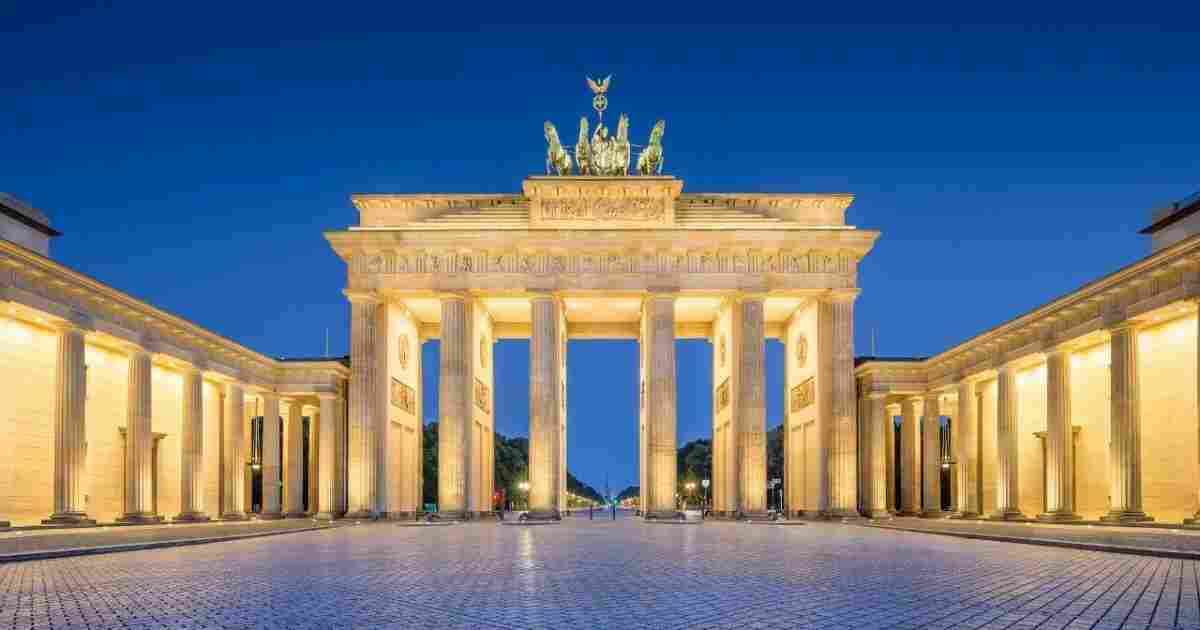Brandenburg Gate Berlin: Brandenburg Gate, Berlin — also known as the Brandenburger Tor — is more than just a monument. In fact, it stands as a powerful symbol of Germany’s history, resilience, and unity. Located in the heart of Berlin at Pariser Platz, the gate has witnessed centuries of change, from political struggles to cultural celebrations.
Moreover, it continues to inspire both locals and travellers who gather here to experience Berlin’s living history. Whether you’re a history enthusiast, architecture lover, or first-time visitor, the Brandenburg Gate invites you to see, reflect, and feel the true spirit of Berlin.

Historical Background: From Royal Gateway to Global Symbol
The Brandenburg Gate stands as one of Berlin’s most famous landmarks. King Frederick William II of Prussia ordered its construction between 1788 and 1791 to mark the start of the road to Brandenburg an der Havel. Architect Carl Gotthard Langhans designed the gate in a neoclassical style, inspired by the Acropolis in Athens. Through his vision, the monument became a lasting symbol of peace and unity.
At the top, the gate features the Quadriga — a chariot drawn by four horses and driven by Victoria, the Roman goddess of victory. Over the years, this image has changed in meaning, evolving from a sign of triumph to a symbol of hope and peace for the German people.
A Witness to War, Division, and Reunification: Brandenburg Gate Berlin
The Brandenburg Gate has witnessed some of the most powerful moments in German history.
During the Napoleonic Wars in 1806, Napoleon marched through Berlin and carried the Quadriga statue to Paris. Years later, the statue returned home, becoming a symbol of Germany’s strength and resilience.
In the Nazi Era, the Gate served as a backdrop for propaganda rallies and events. As a result, it came to represent a dark and painful chapter in the nation’s past.
After World War II, the Cold War divided Berlin. The Brandenburg Gate stood in no-man’s-land, trapped between East and West. When the Berlin Wall rose in 1961, the Gate became off-limits to everyone, a stark symbol of separation.
Finally, on December 22, 1989, after the Berlin Wall fell, the Brandenburg Gate reopened to the public. Since then, it has stood as a global symbol of peace, unity, and freedom.

Visiting the Brandenburg Gate Today: Brandenburg Gate Berlin
Located in the heart of Berlin, the Brandenburg Gate is easy to reach on foot and surrounded by major attractions such as the Reichstag Building, Unter den Linden Boulevard, and Tiergarten Park. Because of this, it’s a perfect starting point for exploring the city.
Moreover, the area around the Gate is alive with energy and culture. You’ll often find:
- Cultural events and street festivals
- Light shows during Berlin’s famous Festival of Lights
- Travellers and photographers capturing memories beneath its historic arches
📸 Best Time to Visit
At sunset, the Gate glows in golden light, creating a perfect backdrop for photos. Later in the evening, it shines again — beautifully illuminated against the night sky. As a result, both moments offer unforgettable views of this Berlin icon.
Architectural Highlights: Brandenburg Gate Berlin
Height: 26 meters (85 ft)
Columns: Twelve Doric columns — six on each side — create five graceful passageways.
Quadriga: A restored replica of the original statue stands proudly atop the gate, watching over Berlin.
Over the years, the Brandenburg Gate has been carefully restored to keep its timeless beauty. Even today, it still shows the same structure and elegance that make it one of Berlin’s most beloved landmarks.
As a result, the monument reminds every visitor of Germany’s journey — from division to unity and peace.

How to Get There
📍 Location: The Brandenburg Gate stands proudly at Pariser Platz, 10117 Berlin, Germany. In fact, it’s one of the most photographed landmarks in the city and a must-see stop for every visitor.
🚆 Nearest Stations: You can reach it easily by public transport. The closest stop is Brandenburger Tor, served by both the S-Bahn and U-Bahn. Moreover, Berlin Hauptbahnhof, the main railway station, is just a 10-minute walk away. Because of this, the site is very easy to access.
💶 Entry Fee: Good news! Visiting the Brandenburg Gate is completely free, making it a budget-friendly highlight of Berlin.
🕒 Open Hours: The gate is open 24/7, so travellers can enjoy its beauty both day and night. As a result, it’s one of Berlin’s most welcoming and flexible attractions.
Conclusion: More Than Just a Monument : Brandenburg Gate Berlin
The Brandenburg Gate is more than just a photo stop — it’s a living symbol of freedom, resilience, and unity. In fact, every detail of its stone walls shows Berlin’s strength and history. Each arch, therefore, tells a story that connects the city’s past with its hopeful future.
Moreover, when you stand beneath the gate, you can feel the energy of a nation that has rebuilt itself again and again. Whether you’re exploring Germany for the first time or returning to relive its spirit, the Brandenburg Gate remains the beating heart of Berlin — a place where history and hope meet.
